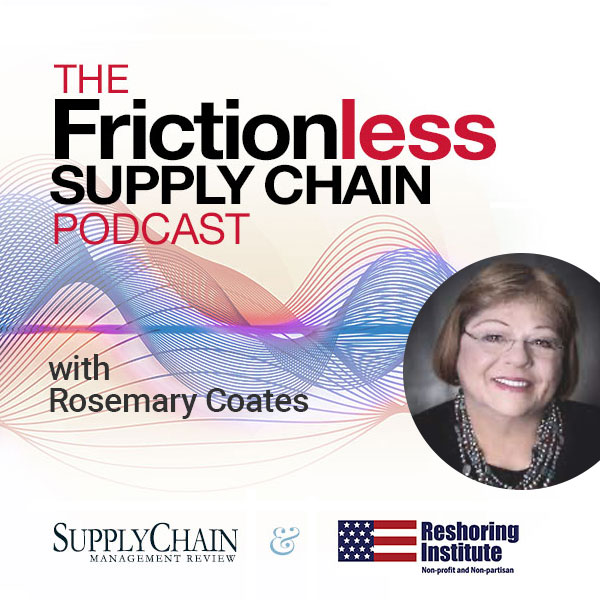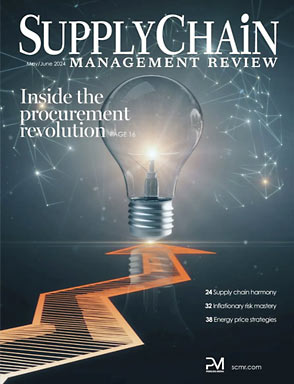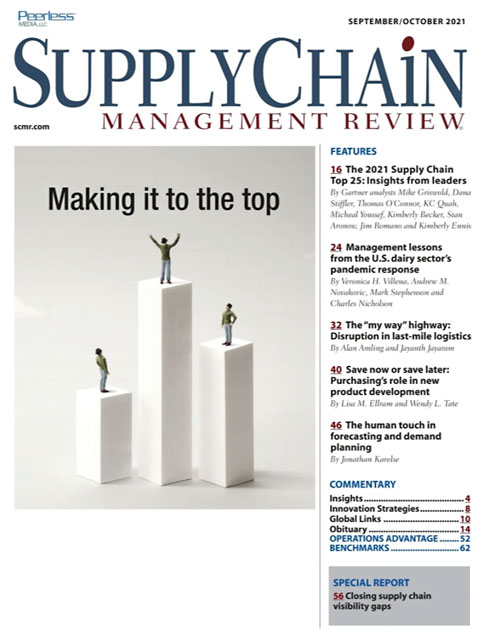Sorry, but your login has failed. Please recheck your login information and resubmit. If your subscription has expired, renew here.
September-October 2021
This time every year, we publish Gartner’s Top 25 supply chains, the annual list of the supply chains that have made it to the top, a list that now also includes 5 Masters, or companies that have consistently outperformed year after year. You can read the article in this issue, along with the web exclusive material we publish on scmr.com, to find out what it takes to become a supply chain leader. Browse this issue archive.Need Help? Contact customer service 847-559-7581 More options
Eleven years ago I wrote an Insights column titled: “Making promises you can keep…optimally.”* The deck was: “Optimized order processing and fulfillment(OP&F) is a proven technique for pleasing customers by giving them more accurate information on their orders.” Since then, and more recently, I’ve noticed that making promises you can keep is often times a critical shortfall in some supply chains.
Reflections on the importance of promising
The biggest supply chain stories over the past decade have been about the success of e-commerce order fulfillment—with Amazon’s e-tailing success the grandest of them all. What has made e-commerce buying so attractive to consumers versus shopping at a brick-and-mortar store?
Traditionally, Americans generally place greater relative value on instant gratification and convenience. I’ve never forgotten a statement I heard during a talk by the chief marketing officer of a consumer products company. One of the principles he followed during the development of new products and services was to “never bet against lazy.” He should have said: “Americans want to purchase products conveniently and get use out of them as soon as possible, especially if they save time.”
Traditional retailers offer products in stores and thus enable consumers to get instant gratification by buying them off the shelf. However, the total shopping experience also includes the travel time to and from the store, as well as time browsing and at the check- out. It’s not exactly instant gratification, but it’s close. Meanwhile, buying online eliminates travel time, and may save browsing and checkout time, but the delivery time to get an order to a consumer might add days, or even weeks, to the total order lead time. In terms of the customer experience, there’s a tradeoff between the convenience of shopping online, and the time to get the product delivered.
The success of e-tailing, however, has less to do with this trade-off, and more to do with getting the product as soon as possible with a virtually-guaranteed delivery (fulfillment date). Before e-tailing, a consumer was never sure whether an item or branded product was on the shelf or in the store’s backroom until the shopper got to the store. For example, if a product was on sale, often it was sold-out by the time a customer got there.

This complete article is available to subscribers only.
Log in now for full access or start your PLUS+ subscription for instant access.
SC
MR
Sorry, but your login has failed. Please recheck your login information and resubmit. If your subscription has expired, renew here.
September-October 2021
This time every year, we publish Gartner’s Top 25 supply chains, the annual list of the supply chains that have made it to the top, a list that now also includes 5 Masters, or companies that have consistently… Browse this issue archive. Access your online digital edition. Download a PDF file of the September-October 2021 issue.Eleven years ago I wrote an Insights column titled: “Making promises you can keep…optimally.”* The deck was: “Optimized order processing and fulfillment(OP&F) is a proven technique for pleasing customers by giving them more accurate information on their orders.” Since then, and more recently, I’ve noticed that making promises you can keep is often times a critical shortfall in some supply chains.
Reflections on the importance of promising
The biggest supply chain stories over the past decade have been about the success of e-commerce order fulfillment—with Amazon’s e-tailing success the grandest of them all. What has made e-commerce buying so attractive to consumers versus shopping at a brick-and-mortar store?
Traditionally, Americans generally place greater relative value on instant gratification and convenience. I’ve never forgotten a statement I heard during a talk by the chief marketing officer of a consumer products company. One of the principles he followed during the development of new products and services was to “never bet against lazy.” He should have said: “Americans want to purchase products conveniently and get use out of them as soon as possible, especially if they save time.”
Traditional retailers offer products in stores and thus enable consumers to get instant gratification by buying them off the shelf. However, the total shopping experience also includes the travel time to and from the store, as well as time browsing and at the check- out. It’s not exactly instant gratification, but it’s close. Meanwhile, buying online eliminates travel time, and may save browsing and checkout time, but the delivery time to get an order to a consumer might add days, or even weeks, to the total order lead time. In terms of the customer experience, there’s a tradeoff between the convenience of shopping online, and the time to get the product delivered.
The success of e-tailing, however, has less to do with this trade-off, and more to do with getting the product as soon as possible with a virtually-guaranteed delivery (fulfillment date). Before e-tailing, a consumer was never sure whether an item or branded product was on the shelf or in the store’s backroom until the shopper got to the store. For example, if a product was on sale, often it was sold-out by the time a customer got there.
 SUBSCRIBERS: Click here to download PDF of the full article.
SUBSCRIBERS: Click here to download PDF of the full article.
SC
MR


Latest Supply Chain News
- Despite American political environment, global geopolitical risks may be easing
- Joseph Esteves named CEO of SGS Maine Pointe
- Employees, employers hold divergent views on upskilling the workforce
- April manufacturing output slides after growing in March
- Q1 sees a solid finish with positive U.S.-bound import growth, notes S&P Global Market Intelligence
- More News
Latest Podcast

 Explore
Explore
Business Management News
- Joseph Esteves named CEO of SGS Maine Pointe
- Employees, employers hold divergent views on upskilling the workforce
- April manufacturing output slides after growing in March
- Q1 sees a solid finish with positive U.S.-bound import growth, notes S&P Global Market Intelligence
- 6 Questions With … Sandeep Bhide
- MIT CTL offering humanitarian logistics course
- More Business Management
Latest Business Management Resources

Subscribe

Supply Chain Management Review delivers the best industry content.

Editors’ Picks





